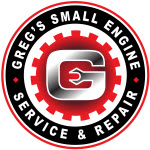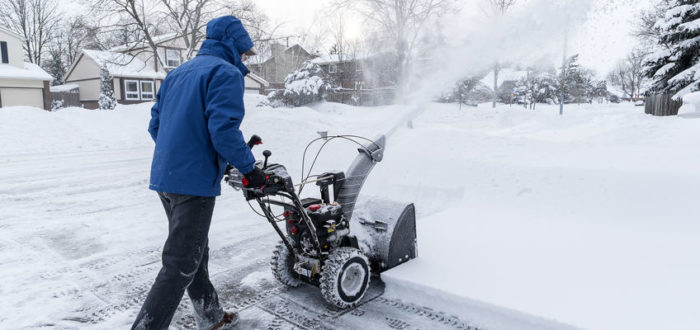There is an underlying question of whether snow throwers and snow blowers are the same. Most marketers use these same characteristics to increase the cost of the machine. However, these machines have differences. Knowing about each of these snow removal machines and their differences will guide you determine what to get to suit your needs.
A snow thrower is a single-stage machine, unlike snow blowers which are two-stage machines. Single-stage units pick up the stuff at great speed. It then uses that speed to remove the snow from its nozzle and shoot it away. On another hand, a snow blower machine has two stages. The first stage will pick up the snow. The next stage involves the motor-driven part or the impeller launching the snow away. This means that a snow blower will expel snow at greater distances. The job will be done quicker with snow blowers as they are wider, bigger and more powerful. They are also great when dealing with compacted, tall or slushy snowbanks.
A snow thrower is not ideal for heavy snow. However, if you only want to clear dry or small snowbanks, then snow blowers are not necessary. The best way to pick up the machine you need is to base it on how much and how often snowfall is expected. That way you will not end with anything less or more than you require.
Let us dig deeper into the pros and cons of each machine that will help you determine which one to get.
Snow Blowers
When there is a blizzard tearing down your town and strong winds whipping through the trees, you can expect the worst. Once over, you have a big job to do – shoveling your way out just to reach the driveway. Consider a snow blower if you are expecting at least wet and heavy snow about 24 inches or higher. They are not called a powerful monster for nothing.
Advantages of a Snow Blower
Wide Clearance
Most snow blowers can be as wide as 2 feet, which can remove snow from your driveway with just a few passes. Normally sidewalks and walkways take only one pass.
Tall Clearance
With the tall blower’s mouth, there is no need to knock snow down first. You can tackle big snow banks with ease. This makes sure that the piles are removed quickly.
Moves wet and heavy snow
Shoveling heavy snow is a painful and time-consuming task. A snow blower will effectively move heavy snow. The drill will first break the snow, pick it up and then feeds it to the impeller. It then blows the snow out from the chute to the location you want the snow to go.
Self-propelling
Snow blowers drive a bit like a lawnmower. Since they can be heavy and large, pushing this machine is impossible for some. This type of snow removal machine comes with at least two speeds in reverse and four forward. Some brands may offer as many as six speeds forward.
Disadvantages of Snow Blowers
More expensive
Since you get more power with snow blowers, it only makes sense that these machines are a bit pricier. They are normally two to three times pricier than a snow thrower, with some costing as much as $1000.
Requires regular maintenance
A lot of snow blowers are powered by gas, electricity and engine oil combined. With that said, blowers need extra care such as regular oil changes. The good thing though is that most of these machines are manufactured with electric starts, so there is nothing to worry about it starting. However, you still need to make sure that the gas is full and there is enough engine oil to keep it running during the whole winter season.
Snow Throwers
Depending on how much snowfall you have, a snow thrower can be useful as well. They are sometimes called snow blowers but are different.
Advantages of a snow thrower
Lightweight
Typically, snow throwers are much smaller in size and lightweight. They can be easily stored anywhere at home and are super easy to maneuver.
Affordable
Single-stage machines are less expensive to produce so they are easy on the wallet. They are also less expensive to run and require no maintenance. Buying a snow thrower will let you spend at least half or one-third as much as buying a two-stage blower machine.
Decent width clearance
Some throwers may be up to 20 inches wide, but most units range from 16-18 inches. It is still wide enough to tackle a walkway or sidewalk quickly. However, using a snow thrower may require you to make a few passes on a driveway compared to using a two-stage machine.
No maintenance required
A small thrower unit can be easily plugged into an outlet and powered by electricity. Some units are even cordless battery-powered tools. No maintenance for oil and gas is required and you won’t have to worry about pulling cords.
Clears down to the pavement
A snow thrower is your best choice when you want a machine that will scrape down to the ground. This is the most suitable one for unpaved surfaces since the auger makes contact with the pavement. Snow throwers are great for porches, driveways, walkways, or patios. It won’t damage the surfaces either since the augers on this machine are also normally covered with rubber
Disadvantages of a Snow Thrower
Not enough power for snow buildup
If you are dealing with ice snowfalls and large banks, a snow thrower may not be suitable. The drill on this machine is not as powerful, so using it will be difficult.
Doesn’t blow snow far enough
While you can still throw snowfall from one area to another, it won’t be as far as what the snow blower can reach. The most it can reach will probably be a 20-foot distance.
The differences among these two machines are great, despite the fact that they are almost the same. Choosing which one to buy depends on how much snow you encounter each winter season.
To help you decide which one to choose, Greg’s Small Engine can help. If you need assistance with a snow thrower or snow blower repair, we are the best person to contact.






















